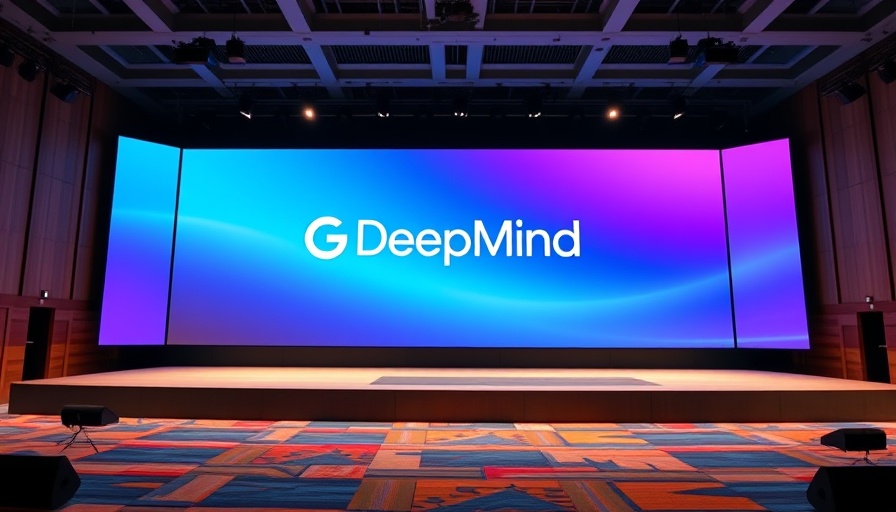
Revolutionizing Data Management: Monte Carlo's Game-Changing Integration
In today's data-driven world, organizations face the daunting challenge of ensuring data quality and reliability, especially within their CRM systems. Monte Carlo has stepped up to the plate with its recent launch of a native Salesforce integration that promises to transform the way companies handle their data. This integration not only boosts data observability but also empowers teams to utilize AI more effectively, paving the way for more streamlined and informed business operations.
Why Data Integrity Matters in Business
Salesforce is a cornerstone platform for many enterprises, serving as a repository of vital customer information and sales data. However, the integrity of this data is often compromised by issues like duplicates, null values, and invalid formats. According to Lior Gavish, co-founder and CTO of Monte Carlo, bad data can severely impact decision-making processes, leading to missed revenue opportunities and eroded customer trust. By addressing these issues proactively with their integration, Monte Carlo is enabling businesses to elevate their operational efficiency.
Insights from Early Users: A Shift in Data Confidence
Feedback from early adopters has been overwhelmingly positive. As noted by Pedro Sá Martins from Outsystems, the ability to catch data errors before they propagate can save teams significant time and resources. This early intervention not only prevents the infiltration of bad data into business-critical systems but also instills greater trust in the insights derived from the data, ultimately enhancing executive decision-making.
The Benefits of AI-Ready Data in Salesforce
By integrating AI observability into Salesforce, Monte Carlo equips businesses to leverage AI power more effectively. The integration allows AI teams to build applications with the confidence that the underlying data is solid—which is crucial in an age where AI-driven decisions can dictate market strategies. Users can utilize Agentforce to automate various workflows, ensuring that the data informing these automation processes is reliable and accurate.
Real-Time Monitoring: A Game-Changer for Sales and Marketing
This integration changes the game for sales and marketing teams by enabling them to validate customer profiles in real-time. This capability helps reduce costs associated with misdirected campaigns and improves the ROI of marketing strategies. With Monte Carlo's tools, data teams can trace and resolve issues before they affect operations downstream, ensuring a seamless flow of accurate information.
Looking Forward: Trends and Predictions in Data Management
As we move deeper into the era of AI and machine learning, the need for reliable data will only grow stronger. Organizations that prioritize data integrity through robust solutions like Monte Carlo's integration will find themselves at a distinct advantage. Predictions indicate a continued focus on AI solutions that enhance operational workflows, making it imperative for businesses to adopt tools that address data quality from the root.
Empowering Teams Beyond Data Monitoring
Monte Carlo's integration doesn't just empower data and operations teams; it extends its benefits to everyone who interacts with Salesforce. For instance, account managers can feel confident that the client data they're reviewing is accurate, empowering them to make informed decisions in real-time. This holistic approach enhances accountability and promotes a company-wide culture of data stewardship, where data quality becomes everyone's responsibility.
A Broader Perspective on Data Integration Technologies
Monte Carlo’s pioneering integration is a vital step forward in the evolving landscape of business technology. While similar platforms continue to emerge, the emphasis on AI-ready data sets Monte Carlo apart. By focusing heavily on data observability, companies will likely reap the benefits of improved customer satisfaction and enhanced transparency in operations.
In conclusion, as organizations integrate Monte Carlo's Salesforce capabilities into their workflows, the ability to transform data into reliable insights will lead to not only operational excellence but also sustainable growth. The integration exemplifies the critical need for data quality in a fast-paced digital economy.
As businesses continue to navigate the complexities of data management and AI integration, Monte Carlo stands as a beacon for those ready to embrace a future rich with data-driven possibilities.
 Add Row
Add Row  Add
Add 




Write A Comment